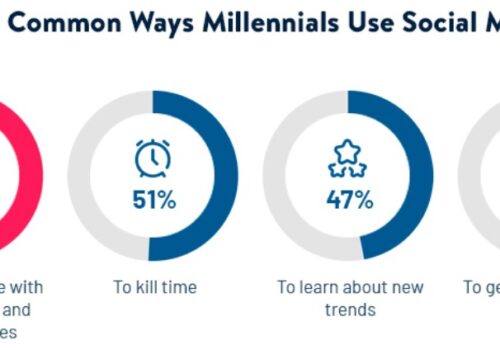Word of Mouth Marketing (WOMM) has always been a powerful tool for businesses, and in today’s digital age, it’s more influential than ever.
This marketing strategy relies on people sharing their experiences, opinions, and recommendations about a product or service with others.
It’s the kind of promotion that money can’t buy, and it can significantly impact a brand’s reputation and success.
Let’s delve into the world of word-of-mouth marketing, exploring key statistics, facts, and figures that highlight its importance and effectiveness.
| Key Statistic | Percentage/Value |
|---|---|
| Daily Discussion of Favorite Items | 23% |
| Weekly Bragging about Experiences | 78% |
| Trust in Friend/Family Product Recommendations | 88% |
| Negative WOM Impact on Trust | 21% |
| Referral of Local Brands by Word-of-mouth | 61% |
| Trust in Consumer Online Reviews | 70% |
| Influencer Recommendation Impact on Shopping | 49% |
| Visual User-Generated Content Impact | 85% |
| Monthly/Weekly Personal Recommendations by Americans | 55%/30% |
| Global Annual Spending Due to Electronic WOM | $6 trillion |
| Marketers’ View on WOM Marketing Efficiency | 64% |
| Increase in Marketing Efficacy Due to WOM | 54% |
| WOM vs Paid Advertisement Sales Generation | 5 times more |
| Trust in User-Generated Content and Online WOM Over Advertising | 92% |
| Trust in Brand Recommendations by Friends | 90% |
Facts and Figures on Word of Mouth Marketing
Source: Pexels
- Whenever it comes to discussing our favorite items with friends and family, 23 percent of us do so on a daily basis.
- At least once a week, 78 percent of us brag about our favorite experiences to individuals we know.
- Whenever a family member or friend recommends a product, 88 percent of people are far more likely to believe it.
- Word-of-mouth (#1) is the most popular way to recommend a business, trailed by Facebook, Google, & Twitter.
- WOM (word-of-mouth) can be positive or negative, and unfavorable word-of-mouth causes 21% of individuals to lose trust in a business, regardless of whether they’ve been a customer.
- By word-of-mouth, 61% of respondents have referred a local brand to someone they know.
- At least 90 times per week, consumers casually discuss certain brands. Consumer online reviews are trusted by 70% of individuals.
- 58 percent of customers use social media to express their favorable experiences with a business and to ask family, coworkers, & friends for their thoughts on companies.
- Brands that elicit a higher level of emotional intensity receive three times the amount of WOM as brands that elicit a lower level of emotional intensity.
- After posting or favoriting a product on Pinterest, Twitter, or Facebook, 43 percent of social media consumers say they bought it.
- When it comes to shopping decisions, 49% of consumers say they lean on influencer recommendations.
- More than 50% of purchases made as a result of social media sharing happen within a week of the sharing or favoriting.
- Within 3 weeks of sharing, 80% of purchases made as a result of social media are made.
- Visual user-generated material is more impactful than brand photographs or videos for 85 percent of website visitors.
- A whopping 83 percent of Americans have passed on a recommendation.
- At least once a month, 55 percent of Americans provide personal recommendations, and 30 percent provide recommendations once per week.
- WOM suggestions from family and friends are valued by 41% of Americans far beyond social media recommendations.
- An anonymous online review is trusted by 66 percent of Americans more than a suggestion from a former boyfriend/girlfriend.
- Before making a purchase, 61% of shoppers use search engines to check product reviews.
- When consumers are granted a reward or social recognition, they are 50% more likely to join a referral program and promote a product.
- Because they had a “wonderful experience,” 71% of respondents will provide a referral.
- 65 percent of companies rely on word-of-mouth referrals to fill open positions.
Positive and Negative Effects of Word-of-Mouth Marketing
Source: Pexels
- 90 percent of all purchases are made as a result of word of mouth.
- When researchers looked at several individual case studies, they discovered that a 10% boost in word-of-mouth (offline and online) resulted in a sales boost of between 0.2 and 1.5 percent.
- Word of mouth, according to 28% of consumers, has a significant impact on whether a brand’s affinity is strengthened or eroded.
- WOM ranked as the most powerful buying influencer among millennials in each category.
- For expensive purchases and financial items, word-of-mouth is the most influential factor among baby boomers.
- The majority of small businesses (85%) feel that word-of-mouth referrals gained them the most customers.
- Especially if there are several customer reviews, 32 percent of people believe online reviews.
- In some consumer categories, a Facebook fan is worth $174 on average. The biggest motivation for “liking” a company’s Facebook page, according to 79 percent of users, is to receive discounts.
- If given a social recognition, direct incentive, or accessibility to an exclusive brand loyalty program, 39 percent of respondents are willing to make a reference.
- Money or material incentives, such as gift cards, free swag, or discounts, are said to improve the likelihood of recommending a company to others by 39% of respondents.
- Positive word-of-mouth about a firm increases the likelihood of consumers using it by 91%.
- A 10 percent increase in word-of-mouth referrals can boost sales by 1.5 percent.
- An average client will inform around 8 to 16 individuals about a terrible encounter.
- Consumers who have a 2nd negative experience with a company will tell over 20 people about it.
- A happy consumer who has gotten their problem fixed by a company would often tell 4 to 6 people about their excellent experience.
- If a consumer is pleased with their experience with your company, 96 percent of them will visit again, and they are more likely to tell others about their positive experience.
- Only 33% of organizations actively seek out and gather customer reviews.
Statistics on Word-of-Mouth Marketing vs Advertising
- Word-of-mouth is five times more effective than sponsored advertising in terms of generating sales.
- User-generated content and internet word-of-mouth are trusted by 92 percent of worldwide consumers more than advertising.
- WOM has a 115 percent greater influence on millennials than traditional advertising.
- When it comes to wedding preparation, word-of-mouth from friends and family is 331 percent more important than traditional advertising.
- According to a survey conducted by the WOM Marketing Association, 64% of respondents believe that word-of-mouth marketing is much more efficient than traditional marketing.
- Word-of-mouth advertising has been incorporated into 50% of companies’ typical marketing campaigns.
- Consumers distrust commercials, with 75% believing them to be false. For American voters, advertising is the seventh most significant source of information.
Statistical Results From Word-of-Mouth
- 70% of respondents plan to boost their online word-of-mouth marketing cost, while 29% plan to increase their offline word-of-mouth marketing spend.
- After reading a reputable review, 92 percent of B2B clients are more inclined to purchase.
- After seeing a positive review, 57 percent of consumers will go to the website of a local business.
- Exceptional service was cited by 81 percent of marketers as a way of encouraging word-of-mouth.
- After viewing a positive review, 72 percent of customers will take some form of action.
- Sixty percent of marketers track word-of-mouth recommendations by simply asking clients how they learned about their company.
- Offline word-of-mouth is a source of data and guidance for 56 percent of B2-B buyers.
- When internet word-of-mouth sources are included, the percentage rises to 88 percent.
- When it comes to choosing a source of information, 50% of Americans rely on word of mouth.
Quick Links:
- Live Chat Statistics
- Browser Statistics, Facts, and Figures
- Internet Statistics & Facts
- Social Media Statistics You Need To Know
Conclusion: Word of Mouth Marketing Statistics 2025
Word of Mouth Marketing is essential for businesses. It’s when people recommend products to their friends and family, and it influences what we buy.
Social media and online reviews amplify its impact. Loyal customers become advocates, driving more sales.
Having a strategy for word-of-mouth marketing is crucial, as negative comments can harm your brand. It’s not limited to physical products and will continue to evolve with technology and influencer collaborations.
Businesses should prioritize and leverage word-of-mouth marketing for success.
Sources: bigcommerce, invespcro, referralrock, everyonesocial, getambassador, convinceandconvert, Semrush







